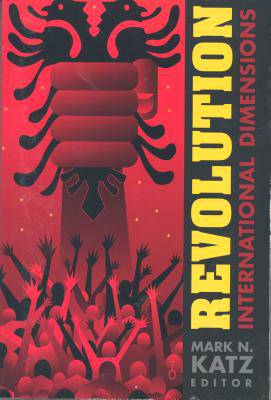
- Afhalen na 1 uur in een winkel met voorraad
- Gratis thuislevering in België vanaf € 30
- Ruim aanbod met 7 miljoen producten
- Afhalen na 1 uur in een winkel met voorraad
- Gratis thuislevering in België vanaf € 30
- Ruim aanbod met 7 miljoen producten
Zoeken
Omschrijving
Although the causes of revolution are often internal, the occurrence of revolution has serious international consequences: existing alliances are upset, the importance of small and weak countries may be magnified, and serious efforts may be required to prevent the export of revolutions to other countries. Mark N. Katz brings together twelve readings from an impressive group of scholars that shed light on this important link between revolution and international relations.Katz introduces students to the ways in which revolution has impacted the international system and to key terms so they are better prepared to critically read and analyze the selections that follow. A distinctive feature of this collection-and one guaranteed to spark lively classroom discussion-is the inclusion of contending views in each part that explore a particular issue. The readings in Part I, for example, present differing arguments on why the link between revolution and international conflict exists or how it occurs. The authors excerpted in Part III disagree about the success or failure of democratization as a means to preempt revolution. And the final section offers opposing views as to the future impact of revolution on the international system.Abundant pedagogy throughout the volume guides students through each reading. Both a general and part introductions frame the readings while selection headnotes and critical thinking questions offer background information and underscore important cross-cutting themes. In addition, an annotated list of suggested readings points students toward resources for further study and research.
Specificaties
Betrokkenen
- Auteur(s):
- Uitgeverij:
Inhoud
- Aantal bladzijden:
- 322
- Taal:
- Engels
Eigenschappen
- Productcode (EAN):
- 9781568025537
- Verschijningsdatum:
- 1/09/2000
- Uitvoering:
- Paperback
- Formaat:
- Trade paperback (VS)
- Afmetingen:
- 153 mm x 229 mm
- Gewicht:
- 453 g

Alleen bij Standaard Boekhandel
+ 356 punten op je klantenkaart van Standaard Boekhandel
Beoordelingen
We publiceren alleen reviews die voldoen aan de voorwaarden voor reviews. Bekijk onze voorwaarden voor reviews.











